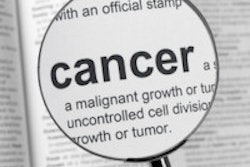Researchers in Singapore have discovered a biomarker that may improve the diagnosis and treatment of esophageal squamous cell carcinoma, according to a new study in Cancer Research (December 3, 2013).
Approximately $1.3 billion is spent in the U.S. on esophageal cancer treatment annually, according to the National Cancer Institute; nearly 18,000 new cases of esophageal cancer were diagnosed in 2013, resulting in more than 15,000 deaths.
Esophageal squamous cell carcinoma (ESCC), the major histological form of esophageal cancer, is the leading cause of cancer death worldwide.
Currently, the prognosis is poor for ESCC patients, with five-year survival rates ranging from 20% to 30%. There is an urgent need for biomarkers that can diagnose the disease as early as possible, estimate reaction to chemotherapy or radiotherapy in patients, and predict the overall survival rate of patients undergoing treatment, the study authors noted.
Researchers from the National University of Singapore have discovered a biomarker, adenosine deaminase acting on RNA-1 (ADAR1), which has the potential to improve the diagnosis, prognosis, and treatment of ESCC. They have demonstrated that the editing of protein-making sequences promotes the development of ESCC.
In normal human cells, DNA serves as a template for the precise production of ribonucleic acid (RNA), making DNA and RNA code identical. Editing is a process in which RNA is changed after it is made from DNA, resulting in an altered gene product. This RNA editing is likely to play a role in tumor formation by either inactivating a tumor suppressor or activating genes that promote tumor progression.
In their study, the researchers discovered that the RNA editing enzyme ADAR1, which catalyzes the editing process, is significantly overexpressed in ESCC tumors. They observed that ADAR1 changes the product of the AZIN1 protein to a form that promotes ESCC development.
Clinically, the tumoral overexpression of ADAR1 was correlated with the shorter survival time of ESCC patients.
The study findings suggest that ADAR1 can serve as a useful biomarker to detect disorders leading to ESCC and as a potential therapeutic target. The findings may also provide the key to a biological process for drug development for ESCC treatment. The tumoral overexpression of ADAR1 can be used as an early warning sign of ESCC, and halting or reversing the process may block the cells' conversion from normal to malignant, the study authors concluded.
The researchers will further investigate the key RNA editing events regulated by ADAR1 during ESCC development. They plan to develop a method to correct the RNA editing process through restoring ADAR balance by silencing ADAR1 and reinstating a specific hyper- or hypoedited transcript, they said.



















